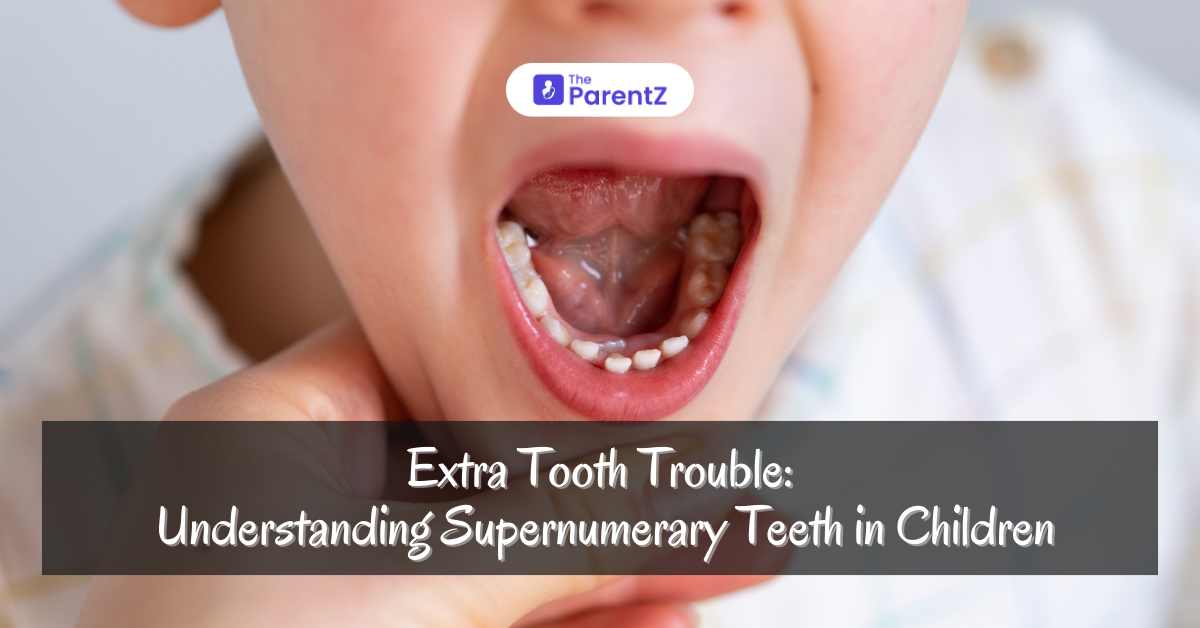Supernumerary teeth, often referred to as hyperdontia, are extra teeth that appear in addition to the regular number of primary or permanent teeth. While it might seem like an unusual condition, it’s not uncommon in pediatric dentistry. Understanding the causes, types, diagnosis, and treatment options is crucial for parents and caregivers to manage this condition effectively.
What Are Supernumerary Teeth?
Supernumerary teeth are any teeth that develop beyond the standard 20 primary (baby) or 32 permanent (adult) teeth. These extra teeth can appear anywhere in the dental arch and can vary in shape, size, and location. While they can occur in both sets of teeth, they are more frequently found in the permanent dentition.
Causes of Supernumerary Teeth
The exact cause of supernumerary teeth is not entirely understood. However, several factors are believed to contribute to their development:
1. Genetic Factors: There is a strong hereditary component, as supernumerary teeth often run in families.
2. Developmental Disturbances: Abnormalities during the early stages of dental development can lead to the formation of extra teeth.
3. Syndromic Associations: Certain syndromes, such as Gardner’s syndrome, cleidocranial dysplasia, and Down syndrome, have a higher incidence of supernumerary teeth.
Types of Supernumerary Teeth
Supernumerary teeth can be classified based on their shape and location:
1. Shape:
- Conical: Small, peg-shaped teeth.
- Tuberculate: Barrel-shaped with multiple cusps.
- Supplemental: Resembling a normal tooth in size and shape.
2. Location:
- Mesiodens: Located between the two central incisors; the most common type.
- Paramolar: Situated next to a molar.
- Distomolar: Located behind the last molar.
Diagnosing Supernumerary Teeth
Diagnosis typically involves a thorough clinical examination and radiographic imaging, such as panoramic X-rays or cone-beam computed tomography (CBCT). These imaging techniques help determine the number, location, and potential impact of the extra teeth on the surrounding structures.
Potential Complications
Supernumerary teeth can cause various dental issues, including:
1. Delayed or Abnormal Eruption: Extra teeth can block the eruption path of permanent teeth, leading to delayed or misaligned eruption.
2. Crowding: The presence of extra teeth can cause overcrowding, which may require orthodontic intervention.
3. Cysts and Tumors: Although rare, supernumerary teeth can be associated with the development of cysts or tumors.
4. Aesthetic Concerns: Visible extra teeth, especially in the front of the mouth, can affect a child’s appearance and self-esteem.
Treatment Options
The management of supernumerary teeth depends on various factors, including the type, location, and potential complications. Common treatment options include:
1. Monitoring: In some cases, if the extra teeth are not causing any problems, they may be monitored over time without immediate intervention.
2. Extraction: Surgical removal is often recommended if the extra teeth are causing or are likely to cause issues, such as crowding or delayed eruption.
3. Orthodontic Treatment: Following extraction, orthodontic treatment may be necessary to align the teeth properly and ensure a healthy bite.
Conclusion
When it comes to your child’s oral health, addressing supernumerary teeth early can prevent potential complications down the road. By seeking professional evaluation and treatment, you can ensure your child maintains a healthy smile and proper dental development. With the right care, your child can enjoy a healthy, confident smile for years to come.








Be the first one to comment on this story.